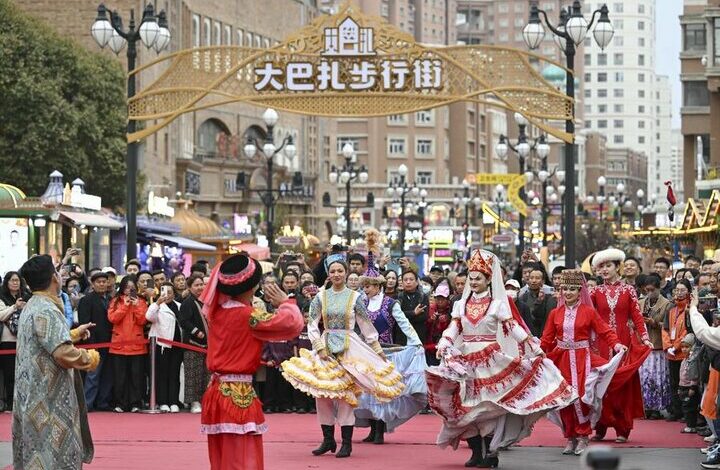Travel to Xinjiang; How does the Chinese government treat Muslims?

report Mehr News Agency quoted by Xinhua, “Hazem Samir”, the deputy editorial director of “Al-Jumhouri” newspaper in Egypt, by publishing a note referring to his recent trip to China’s Xinjiang Autonomous Region, argues that objective observations and The real data does not match what the Westerners say about the situation of Muslims in Xinjiang, and for specific political and strategic reasons, they have launched “human rights” attacks against the Chinese government.
The important parts of Hazem Samir’s note are as follows:
The Xinjiang Autonomous Region of the Uighurs connects China to Central Asia. Due to its location as China’s western gateway for trade with Central Asia and Europe, the government has put a lot of effort into developing the region to make it the center of the grand Belt and Road Initiative (BRI).
Early this year (AD), when I went on a business trip to Xinjiang, I was worried about the 12 million Uyghurs who live in the region, because the report I had read about human rights violations against them. As a truth-seeking journalist, I decided to investigate and discover the truth of these controversial reports during my 12-day stay there.
I met with the general public of this region, Muslims and non-Muslims, and investigated these accusations and how the (central Chinese) government dealt with them; No one expressed dissatisfaction with the government and everyone performed their duties in peace and harmony. The only thing I saw in this area was the hard work (of the government).
The Chinese government, by implementing large plans for the development and training of unskilled people to meet the needs of the labor market and attract investment in tourism, mining, production and agriculture sectors, large plans had started socio-economic.
Since Xinjiang has abundant natural resources, especially oil, natural gas, and coal, the government is committed to developing these resources and turning the region into a key energy supplier. , has invested a lot. To support the growth of this region and its central role in the “Belt and Road Initiative”, the government has invested a lot in the infrastructure of Xinjiang, which includes the construction of highways, railways, logistics centers and energy pipelines; The region that connects China to Central Asia and beyond.
Customs data shows that Xinjiang has taken the lead in China’s total exports to five Central Asian countries, namely Kazakhstan, Tajikistan, Kyrgyzstan, Turkmenistan and Uzbekistan; In 2023, the figure of this export reached 246.57 billion yuan (34.25 billion dollars), which was an increase of 23.2 percent compared to the previous year.
Unlike Western economies, China is more than willing to share its vast experience of economic and technological progress with developing countries to build a future. Prosperous to help everyone; And this is what he calls “the common future for humanity”.
Since I have been studying China for many years, I was not surprised by the sharp contrast between the images and false interpretations of Xinjiang by Westerners and the existing reality of this region; Westerners depict Xinjiang as a place to suppress (the Uyghurs), while the reality is that this region is the engine of growth of various ethnicities for China and countries that are on the path of the “Belt and Road Initiative”.
(By traveling to Xinjiang) I realized why China is facing a flood of criticism from Western media regarding the Uyghurs in Xinjiang and China’s relations with developing countries. is This issue has two reasons; First, the Western countries are trying to undermine China’s emergence as a major country on the world stage, and secondly, they fear that the “Initiative and the Road” plan will change the international order controlled by the West to a multipolar system based on justice and mutual cooperation. ; A big change that the Belt and Road Initiative is able to implement.


